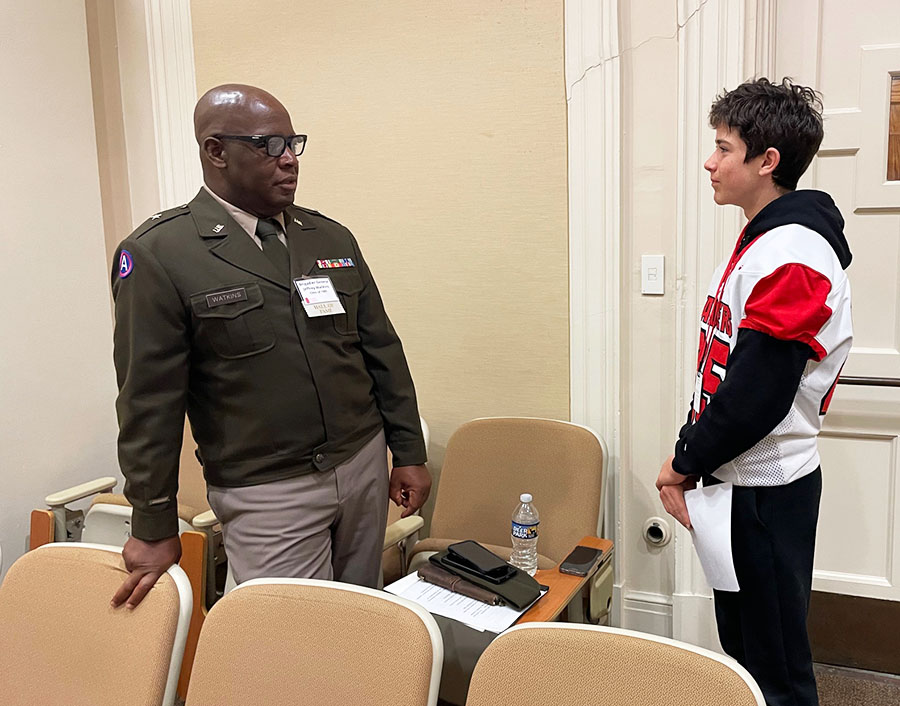After-school conferences, where students can receive personalized help from their teachers, have grown crowded as class sizes have increased.
Budget cuts have resulted in loss of teaching positions, especially in the English department, where four teachers took on an extra class each to make up for two teachers absences this year. The district has also not replaced four teachers who have retired or left the department in recent years. Teachers of the resulting large classes sometimes find themselves overwhelmed at conferences after school, especially the day before a test or essay due date.
The impact was evident when school began and some students waited hours for help. Aimee Grey, who teaches freshman and sophomore honors English, reviewed essays with students until after 4:30 p.m. one September day. Grey didn’t have a chance to look at everyone’s work, even those waiting since 3 p.m.
“I don’t want them to wait an hour and a half and not get to talk to me,” said Grey, who had 99 students in first semester and 95 in second semester in four classes. “I felt awful sending those kids away who waited so long, but it got to a point where I had to leave and go pick up my children.”
Grey employs an open-revision policy in which students can improve and re-submit essays as many times as they feel necessary. This style of teaching requires a strong commitment on the teacher’s part, as it calls for lengthy re-grading sessions and frequent meetings with students. Those writing conferences can be 15-20 minutes long.
Cathy Lawlor, junior AP/IB English teacher, uses the open revision policy as well. “We believe strongly at Shaker in teaching writing as a process, and that involves constant revision,” said Lawlor. “My policy is that students can revise as many times as they want.” Otherwise, said Lawlor, it’s hard for students to grow as writers.
Principal Michael Griffith has seen the effects of cuts in his 12 years leading the high school. “The goal is to be between 25 to 28 students [in Honors classes],” said Griffith. “I’d be uncomfortable if it passed that.”
During the first semester, three English teachers each had a 31-student section and one teacher had a 30-student section.
Griffith estimates that the high school enrollment has remained consistently around 1,750 to 1,800 students during his tenure. He explained that during spring scheduling, counselors and assistant principals try to keep class sizes down, but when students switch classes, the distribution changes. To minimize the problem, counselors did not allow students to change their schedules at the beginning of the school year.
In order to manage her crowded conferences, Grey has incorporated a sign-in book so her students can reserve appointments during conference time. She said the system has helped ensure students who plan ahead will receive attention.
While this solution works for the students who have appointments, other students will still wait for help. Contractually, English teachers are limited to 110 students daily, and next year, English teachers will be assigned five classes, rather than four. Individual classes will become smaller, but the same number of students will still seek help during conferences. The move to five classes also means English teachers will lose 50 minutes of planning time they typically use to assess students’ writing.
When Lawlor began teaching at the high school 17 years ago, she recalls that classes were capped at 17 to 18 students for college preparatory and 23 for honors. Lawlor, who has 29 students in a CP/H class this semester, predicts that with the climb in class sizes, the open revision policy will not be able to continue, something she does not want to see happen.
“You want to keep this academic standard, but it’s impossible,” said Lawlor. “I’m only human.”
A version of this article appeared in print on 8 February 2012, on page 3 of The Shakerite.






